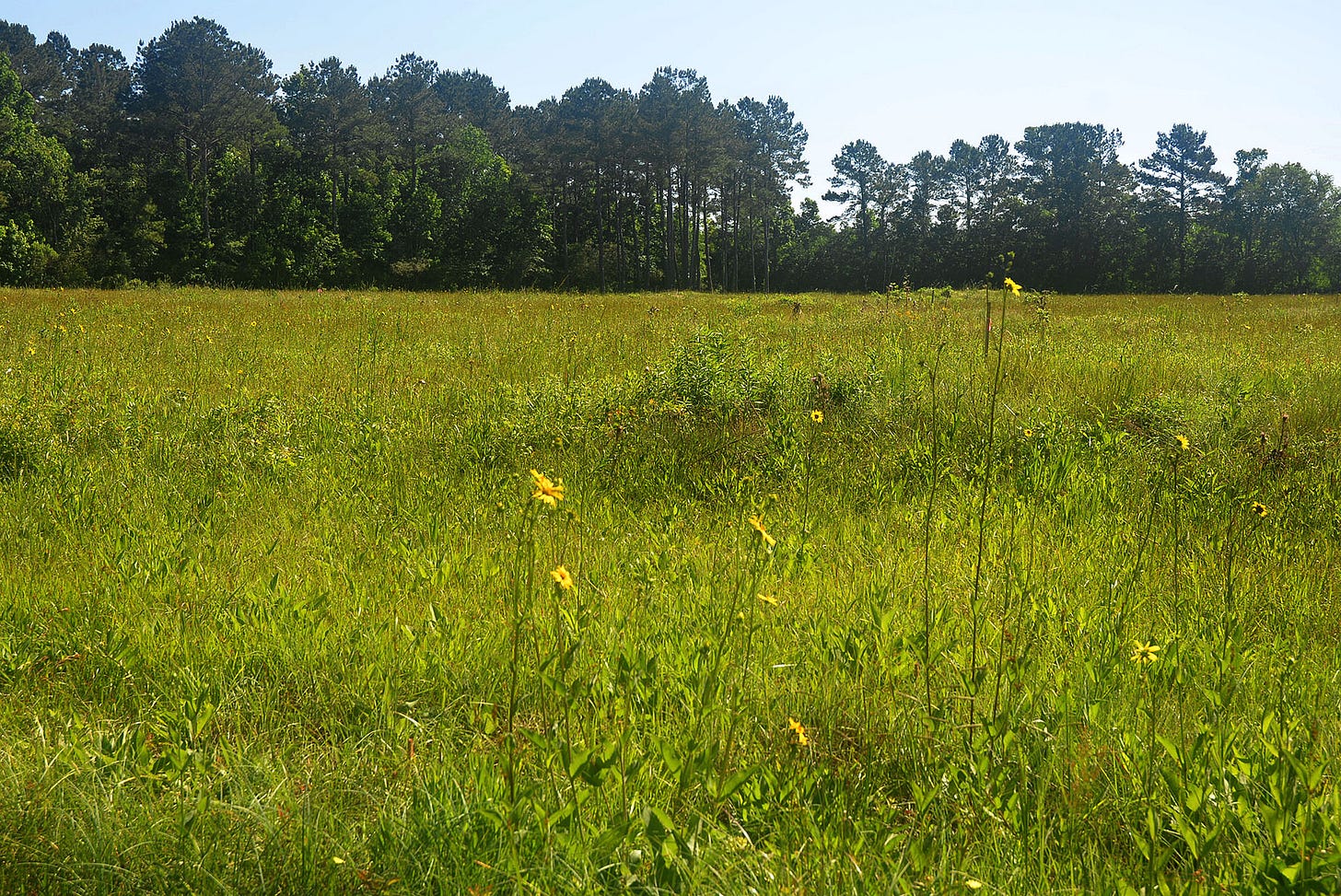
When you envision Cajun culture, you might picture a waterborne life: crawfishing in a flooded cypress forest, say, or a shrimp boat trawling through the coastal marshes. But in the late eighteenth century, as Acadians arrived in Louisiana, many settled west of the swamp country, running cattle atop Louisiana’s extensive prairies.
Grasslands once covered 4,000 square miles in the state, by some estimates, stretching from Lafayette, Louisiana, at the edge of the Mississippi River’s floodplain, to the Sabine River, which marks Louisiana’s western border with Texas. (Beyond the river, more grasslands reach southwest to Corpus Christi, Texas, though, as we’ll see below, this is less surprising.) In the 1980s, as local biologists began to study the local wildflowers, they named Louisiana’s grasslands the Cajun prairie, in honor of its first European settlers.
Keep reading with a 7-day free trial
Subscribe to southlands to keep reading this post and get 7 days of free access to the full post archives.



